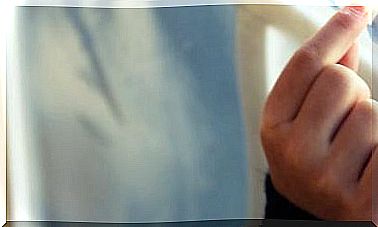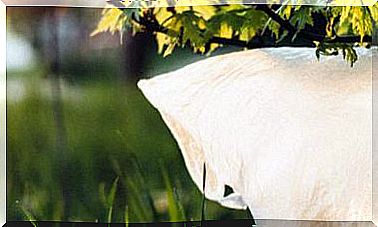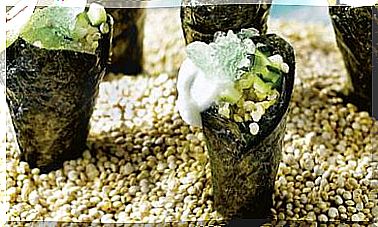6 Ecological And Sustainable Options For Your Heating
Non-polluting hot water and heating systems help reduce climate change and allow savings in the medium and long term.

An average household consumes 9,922 kilowatt-hours (kWh) of electricity per year in Spain, which is equivalent to 0.85 tons of oil, according to the Institute for Diversification and Savings in Spain. That is to say, it releases about two tons of CO 2 per year (the main greenhouse gas) into the atmosphere .
That is its environmental cost, but we can reduce it: heating and domestic hot water (DHW) represent 66% of total energy consumption and any action that reduces these emissions benefits our future and our economy.
Triple Action Plan for an Energy House
To achieve an energy-efficient and clean house we must:
- Choosing the right energy source
- Determine the best heating system
- Ensure optimal insulation of the home
Clean and sustainable energy sources
We must review which will be the most appropriate energy sources, within the clean and sustainable energy options that we have in our environment:
1. Solar energy
Nothing gives as much energy as the sun and there are several possibilities to make the most of it:
- The thermal panels. They serve to heat sanitary water and as a heating support system.
- The photovoltaic panels. They serve to produce electricity. The costs of domestic photovoltaic energy fall every year (between 2,000 and 3,500 euros per kWp) and the plates have a useful life of 25 years or even more. In general, solar thermal panels serve as a support for heating.
Now is a good time because the Government has repealed the rates and impediments to the self – sufficiency of solar energy and the amortization period of the installation is reduced to about 8-10 years.
This energy is becoming popular thanks to the commercialization of plug and play equipment that hardly require installation. With them you generate your own electricity and any electrical heating system will cease to be polluting.
A novelty in green homes are solar tiles. They can heat water for heating and DHW (thermal) or generate electricity (solar photovoltaic). Most are made of ceramic and incorporate photovoltaic cells. They cost between € 30 and € 40 the piece and the installation, € 7,000-8,000, depending on the surface. They reduce the monthly electricity bill by 40-60%.
There are also the glass tiles from SolTech Energy, which produce heating in winter, cooling in summer and DHW all year round. The last to arrive are those of Tesla: aesthetic, efficient and expensive! For a house of 100 m 2 it costs about € 52,000, including the battery.
The drawback is that 100% self-sufficiency with solar energy is only achieved with very extensive installations.
2. The power of the wind
The small wind energy is little known but powerful, renewable and saves money and carbon dioxide into the atmosphere. Wind turbines offer 400 W to 3.2 KW of power and their highest productivity occurs with winds of 45 km / h, since they stop when reaching 100 km / h to avoid damage.
This type of energy compensates in areas with normal wind, but the regulations are very restrictive. It requires an investment of between € 5,000 and € 10,000.
3. The heat of the earth
A geothermal system takes advantage of the fact that the subsoil remains at a stable temperature and manages to save more than 70% in heating, air conditioning and hot water.
It is very suitable for houses with some land, although with the deep drilling system, it is also suitable for a multi-dwelling building with little outside space.
” A house of about 200 m 2 built requires between € 20,000 and € 30,000 depending on the climatic zone, the insulation of the house and the conditions for drilling in the land, ” according to Margarita de Gregorio, coordinator of the Spanish Geothermal Technology Platform .
4. Plant energy
The biomass boilers used as solid fuel of vegetable origin, such as pellets and forestry residues.
CO 2 emissions are considered neutral because the gas released with combustion is part of the natural cycle of plants and does not increase the greenhouse effect. At home, one of the most efficient stoves is the pellet stove, which is better than the wood stove.
How to buy renewable electricity
If you cannot install a self-consumption system, the alternative is to buy 100% renewable electricity, which may be cheaper. The Guarantees of Origin (GdOs) system certifies that the origin is clean.
The cooperatives that produce and distribute renewable energy are already reaching all of Spain. Som Energia is the pioneer and has 50,000 members. Another large cooperative is Zencer, with 32,000 members. You will find them all at www.unionrenovables.coop.
Trading companies make green energy available to everyone. In addition to the rate, you must inquire about the business group behind it in case it is related to fossil energy.
5. Thermal systems for the house
Once the appropriate energy sources have been determined, we must examine the heating systems and look for the most efficient options that best suit our needs. Some good options are:
- The pellet stoves. They heat up to 150 m 2 .
- The stoves double combustion. They also take advantage of the heat of the smoke.
- The fireplaces with an insertable cassette are the most efficient.
- And if you are going to build your house, the ceramic accumulator only needs 12 kg of firewood per day.
- The radiant heating powered by solar energy is the healthiest.
As Rafael Hernández, from Arquitectura Saludable DinA5, explains, ” water heated by the sun does not reach high temperatures (between 40-50 ° C) and it is essential to choose an efficient heat distribution system at low temperatures on floors, walls or ceilings, as does radiant heating “, a network of pipes that transmit heat throughout the surface.
6. Ensure good insulation
Last but not least, “it is essential to ensure that the home has good insulation, without leaks in windows, doors and ducts. Poorly sealed enclosures can lose up to 30% of the heat” , according to Rafael Hernandez. Keep the following points in mind:
- The most ecological insulations are those of cellulose, hemp or natural cork.
- The windows must be double or even triple chamber.
- Take a good look at the most vulnerable points of heat loss, like the drawers of the blinds and the frames.









